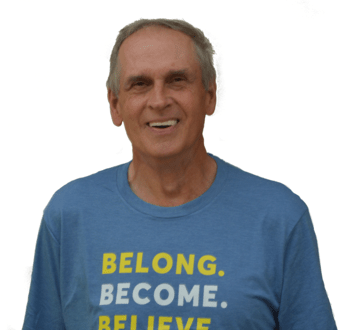When I was in my 30s, I moved to Upper St. Clair. At that time, I was busy with my corporate career, working for Mellon Bank and Rockwell International, and playing tennis was a way to blow off some steam and get some aerobic exercise. More so, it was a terrific way to meet new friends and become a part of the community. Soon, the USC tennis courts became “my home away from home.”
While the fun and camaraderie associated with playing tennis are highly motivating, I soon discovered that playing tennis requires agility, strength, conditioning, and willpower. Mostly, I found that tennis is a very good test of skill. While I have never had a lesson, I have spent countless hours watching videos of Roger Federer, Pete Sampras, and Novak Djokovic to learn and develop my skills so I can teach such to my clients.
A fixture on the courts, I eventually met Jan Irwin. At this point, I was master of my own schedule and owner of my own business, and the rest is history. Jan invited me to join her team, instructing students ages 10 and under, so I pursued obtaining teaching and ROGY certifications. ROGY is an acronym for the progression of tennis balls that younger players use as they grow older, including the use of red balls for children five and older, orange balls for children eight and older, and green balls for children 10 and older. When 12 year-olds have progressed through the low-compression ball lineup and are ready for advanced competition on a full-size court, they play with the standard yellow ball. Students advance at their own pace; it’s not a “one size fits all” program. That’s why I ask my kids, “Did we get better today?” After all, it’s the only thing that matters.
KNOW YOUR PRO
Favorite Female Pro: Evonne Goolagong and Serena Williams
Then…
The Steelers and the Pirates weren’t the only Steel City champions during the 1970s. We also had the Triangles, a co-ed, six-player team that played at the Civic Arena and brought home a title in 1975 with the help of Grand Slam champion Evonne Goolagong. Evonne was the epitome of graceful―it was like watching ballet when she was on the court.
An Indigenous Australian, Evonne overcame major stumbling blocks to become the #1 player in the world, winning 13 Grand Slams. One of eight children, she grew up in a tin house with a dirt floor and no electricity. She fashioned her first racket from a wooden fruit box; it had no strings. As a little girl, she was spotted peering through a fence at Barellan War Memorial Tennis Club by the club president, who asked her if she’d like to come in.
And now…
Undoubtedly, Serena Williams is of the most accomplished tennis players of all time, winning 23 Grand Slam singles titles and four Olympic gold medals. It’s worth remembering that her father, Richard, was a former sharecropper from Louisiana. Determined to see his daughters succeed, he used books and videos to instruct Serena and Venus on how to play tennis. Serena started playing when she was three years old and turned pro at age 14.
Two extraordinary women!
Favorite Male Pro: Jimmy Connors and Pete Sampras
Then…
Jimmy Connors was brash and young and, looking back, I guess I admired his bravado. By the mid-1970s, I had graduated from Pitt with a degree in mechanical engineering and then continued at the Katz School for my MBA, thinking “the world is my oyster.” I think Jimmy Connors might have felt the same, as he was the dominant player at the time. I admired him because he played with heart―every point with all-out hustle.
And now…
After the brash guys (Connors, Nastase, McEnroe), Pete Sampras was the epitome of cool. He could produce an ace―even with his second serve, stripping away emotion to play his best tennis at the most important times. Over six feet tall with classic athleticism, Pete was exceptionally strong and exceptionally fast, hitting winning shots with both his forehand and backhand from anywhere on the court.
Pistol Pete’s greatest rival, Andre Agassi, wrote this about their 1990 US Open final: “…He’s flawless. He’s reaching everything, hitting everything, bounding back and forth like a gazelle. He’s serving bombs, flying to the net, bringing his game right to me. He’s laying wood to my serve. I’m helpless.”
Favorite Tournament: Wimbledon
While I’ve never been to a Wimbledon tournament, I have been to Center Court.
In 1977, I was backpacking with friends across Europe and met a guard at the Wimbledon Stadium who took us on a tour of the grounds, leading us directly to Center Court. It was a magical moment; one I’ll never forget. Plus, Wimbledon has historically been the premier showcase for the one-handed backhand, my favorite stroke.
Favorite Stroke: One-Handed Backhand
The prettiest stroke ever, virtually every top player had a single-handed backhand from Evonne Goolagong, Billie Jean King, and Steffi Graff to Rod Laver, Pete Sampras, and Stan Wawrinka. With the retirements of Roger Federer and Ash Barty, it looked like this stroke was also going into retirement since it’s considered less effective against high-velocity, high-bounce shots. It makes me happy to see the one-handed backhand making a small comeback with the new generation of players like Stefanos Tsitsipas and Denis Shapovalov. For me, the one-handed backhand is far superior for slice and underspin, and much better for drop shots and volleys.
